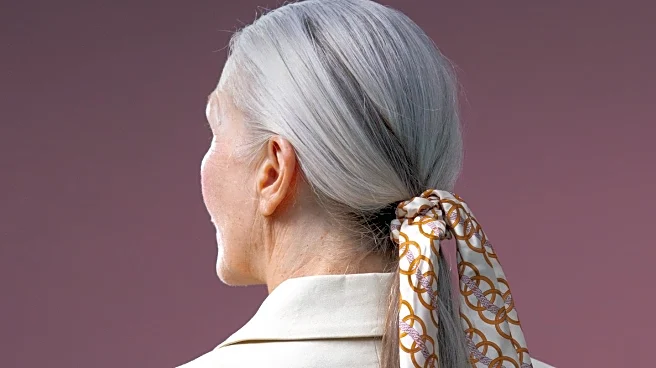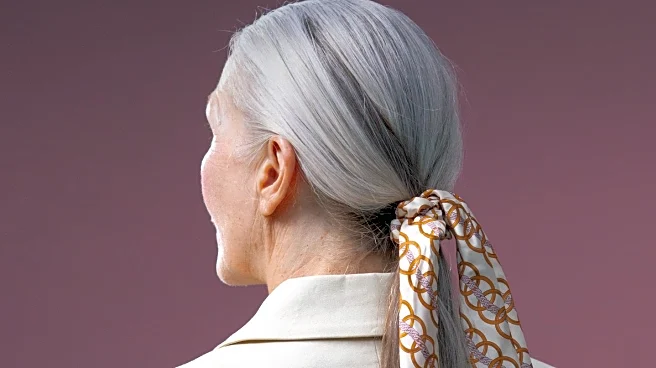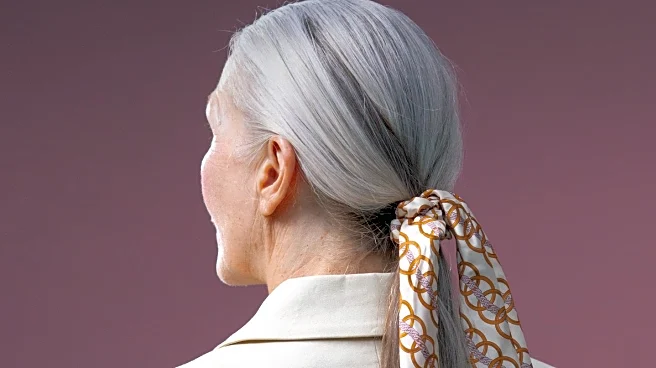What's Happening?
A recent study conducted by researchers in Japan suggests that the presence of gray hair may indicate a natural defense mechanism against cancer, specifically melanoma. The study, published in Nature Cell
Biology, involved a series of experiments on mice, which revealed that melanocyte stem cells (McSCs) in hair follicles undergo a process called 'seno-differentiation' in response to DNA damage. This process leads to the loss of hair color but may reduce the risk of skin cancer by eliminating potentially dangerous cells. The research highlights that McSCs can follow different paths depending on the type of stress and environmental signals they encounter. When exposed to carcinogens like ultraviolet B light and 7,12-dimethylbenz(a)anthracene, McSCs bypass the differentiation process, retaining their self-renewal abilities, which could increase the risk of tumor development.
Why It's Important?
This study provides new insights into the relationship between hair graying and cancer prevention, suggesting that the loss of hair color might be a trade-off for reducing cancer risk. Understanding the molecular mechanisms behind this process could lead to advancements in cancer prevention strategies. The findings also emphasize the importance of cellular responses to DNA damage and how they can influence cancer development. This research could have significant implications for public health, as it may inform future studies on human cancer prevention and treatment, potentially leading to new therapeutic approaches that mimic the protective effects observed in the study.
What's Next?
Further research is needed to explore the mechanisms involved in this protective process and to determine if similar phenomena occur in humans. The study's authors suggest that more work is required to understand the molecular circuits governing McSCs' divergent fates and their implications for tissue aging and cancer. This could pave the way for developing new interventions that enhance the body's natural defenses against cancer.
Beyond the Headlines
The study reframes the perception of gray hair, not merely as a sign of aging but as a potential indicator of the body's response to genotoxic stress. This perspective could influence cultural attitudes towards aging and health, highlighting the complex interplay between aesthetics and biological function. Additionally, the research underscores the importance of understanding stem cell behavior in cancer biology, which could lead to broader applications in regenerative medicine and aging research.













